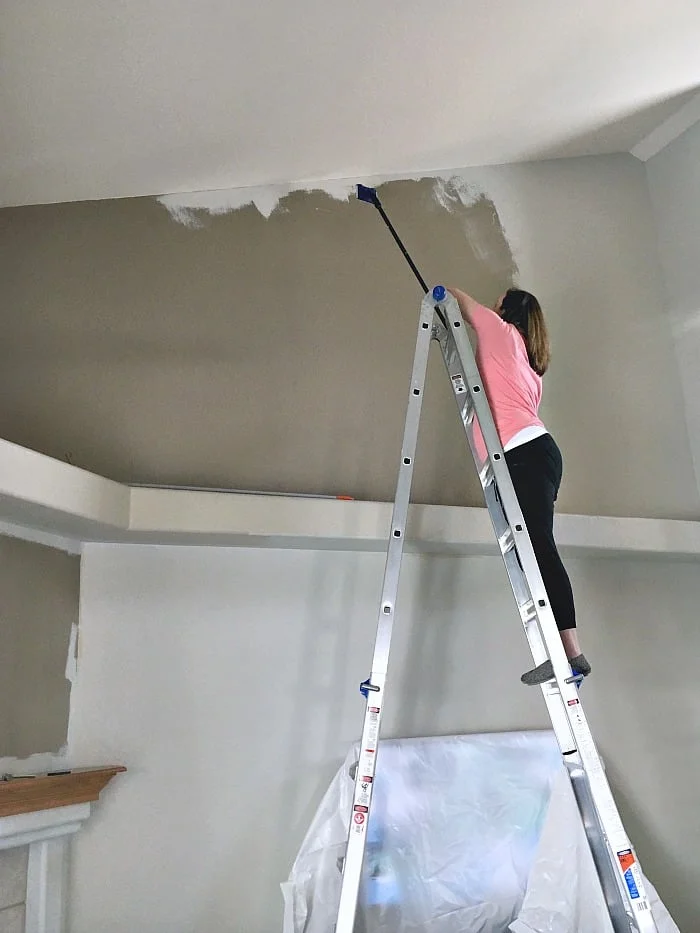Are you contemplating a transformation for your space but curious about the expenses? Delve into our guide on “Cost To Paint High Ceilings” to uncover not only the figures but also valuable insights into the factors influencing the expense and tips to make the process more cost-effective.

Understanding the Investment: Cost To Paint High Ceilings
Why High Ceilings Present a Unique Challenge
High ceilings can add an element of grandeur to any space, but when it comes to painting, they pose a unique set of challenges. The additional height demands specialized equipment, more extensive preparation, and skilled professionals to ensure a flawless finish. All these factors contribute to the overall cost of painting high ceilings.
Cost To Paint High Ceilings: Factors Influencing the Expense
The height of your ceilings is a primary determinant of the overall cost. Taller ceilings require more paint, additional equipment, and increased labor. Contractors often charge per square foot, so the higher the ceilings, the higher the cost.
2. Surface Condition
The condition of the ceiling surface plays a crucial role in estimating the cost. If the ceiling requires significant repairs or extensive preparation work, such as patching holes, smoothing surfaces, or addressing water damage, it can add to the overall expenses.
3. Type and Color of Paint
The type and quality of paint you choose impact the cost. Premium paints often come with a higher price tag, but they may offer better durability and coverage. Additionally, if you opt for multiple colors or intricate designs, it can increase the overall cost.
4. Accessibility of the Ceilings
Ceilings that are easily accessible are more cost-effective to paint. However, if your high ceilings require special equipment such as scaffolding or ladders, the cost may rise due to the additional measures needed for a safe and efficient painting process.
Calculating the Cost: Cost To Paint High Ceilings
1. Cost per Square Foot
Many painting contractors charge per square foot for high ceiling projects. This rate typically includes the cost of labor, paint, and materials. On average, you can expect to pay more per square foot for high ceilings compared to standard ceiling heights.
2. Labor Costs
Labor costs account for a significant portion of the total expense. Due to the challenges posed by high ceilings, skilled and experienced painters are crucial for ensuring a professional finish. Labor costs can vary based on location, expertise, and the complexity of the job.
3. Material Costs
In addition to paint, material costs may include primers, fillers, and other supplies needed for preparation and finishing. Choosing high-quality materials can impact the longevity and appearance of the paint job.
Tips for Managing the Cost
1. Obtain Multiple Quotes
To ensure a fair and competitive price, obtain quotes from multiple painting contractors. Compare the estimates, taking into account the scope of work, materials, and labor costs.
2. Bundle Services
If you have other painting or renovation projects in mind, consider bundling services. Some contractors offer discounts for multiple services, helping you save on the overall cost.
3. Plan Ahead and Budget
Planning ahead allows you to budget for the cost of painting high ceilings. Factor in not only the painting expenses but also any additional costs for repairs or preparation work.
Read too: A Step-by-Step Guide to Installing Rockwool Insulation in Your Ceiling: Unlock Energy Efficiency
Conclusion: Navigating the Costs for a Stunning Result
In conclusion, understanding the “Cost To Paint High Ceilings” involves considering various factors such as ceiling height, surface condition, paint type, and accessibility. By being informed and proactive, you can manage the expenses and ensure a smooth and cost-effective painting process. Remember, investing in a professional and skilled painting service pays off in the long run, contributing to the aesthetic appeal and longevity of your high ceilings.